Many lower Midwestern states and states in the south have warm-season grass. This type of grass thrives in areas where there are mild winters and hot summers. When warm-season grass is planted in areas where the weather gets too cold, it goes dormant in the winter.
The blades turn brown and will stop growing until the weather is warm enough again. Some homeowners prefer to avoid these grasses if they live too far north, while others in the south plant them specifically.
Let’s take a look at which grasses are warm-season for you to get the best idea of which will work in your yard.
1. Bahiagrass
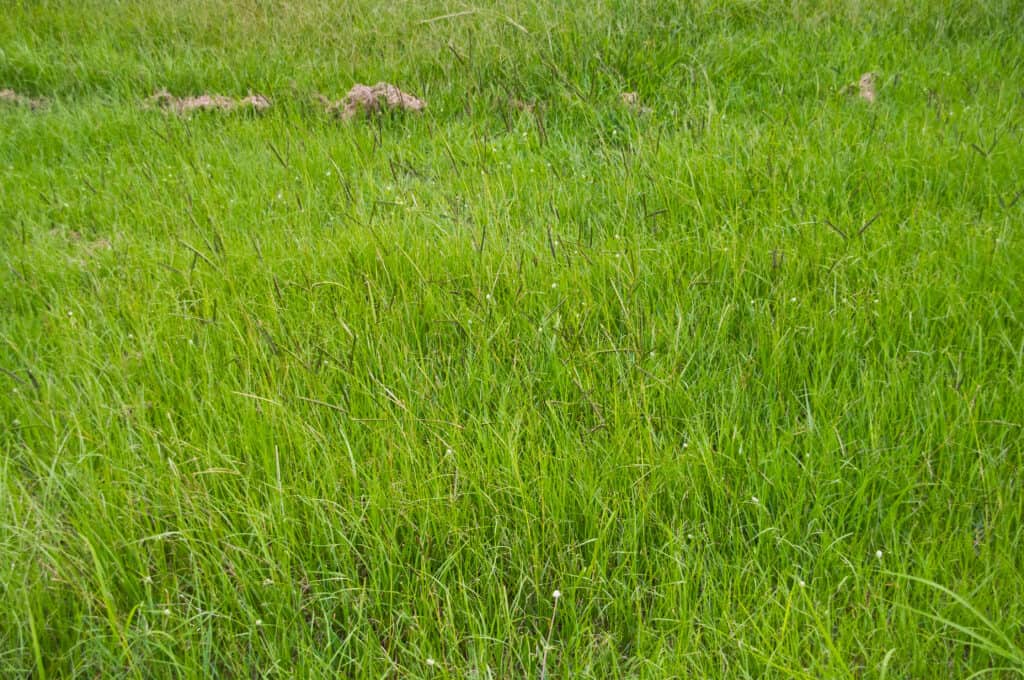
Bahiagrass is popular in states that don’t get much rain.
©John Robert McPherson, CC BY-SA 4.0, via Wikimedia Commons – License
If you’re looking for a drought-resistant and heat-tolerant grass, look no further than bahiagrass. Although few regions in the south use it, it’s incredibly durable. This warm-season grass prefers full sunlight and is best for yards in the Deep South and Gulf Coast.
If you live outside of these regions, you can expect bahiagrass to go dormant in the winter because of the low temperatures. Bahiagrass is extremely drought-tolerant due to its inherently deep root structure, especially in sandy substrates that are typical in the Southeast.
Compared to many other regional turf, especially the cool-season grasses that are abundant in northern regions, it has a coarser natural feel. Some types of bahiagrass, which originated as pasture grass, have shown their worth as grass for lawns in the Southeast, which is known for its high temperatures and moisture.
2. Bermuda Grass
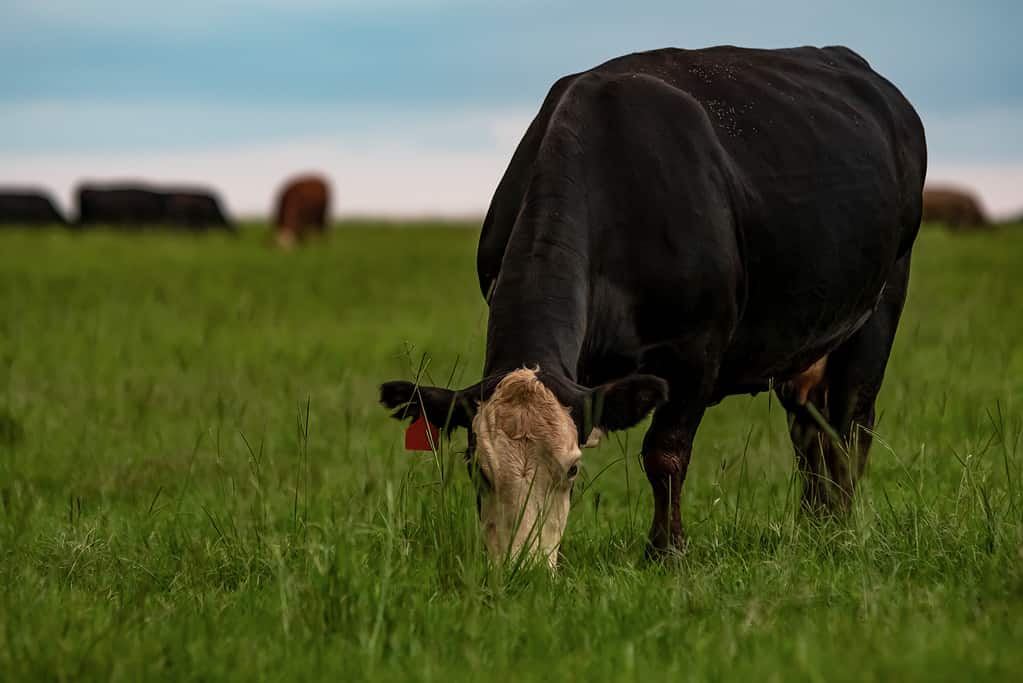
Many farmers opt for Bermuda grass to feed their livestock.
©JNix/Shutterstock.com
Since Bermuda grass is a warm-season turfgrass, it thrives in the nation’s southern regions. It is well known that this perennial grass can withstand challenging circumstances including extreme temperatures, lack of moisture, foot traffic, and even salt.
Furthermore, it heals from damage more quickly than other kinds of grasses. Both sod and seed can be used to plant Bermuda grass during the warm-season months of spring as well as summer.
This grass spreads quickly, growing both above and below the ground via runners. The comparatively wide, pointy ends of the fine- to medium-textured blades produce a lush, rich green blanket of grass.
In the winter it goes dormant and turns brown. If there is no frost in your region, a Bermuda grass lawn can remain green all winter long. Zones seven through 10 on the USDA plant hardiness chart are appropriate for most varieties of Bermuda grass.
3. Buffalo Grass
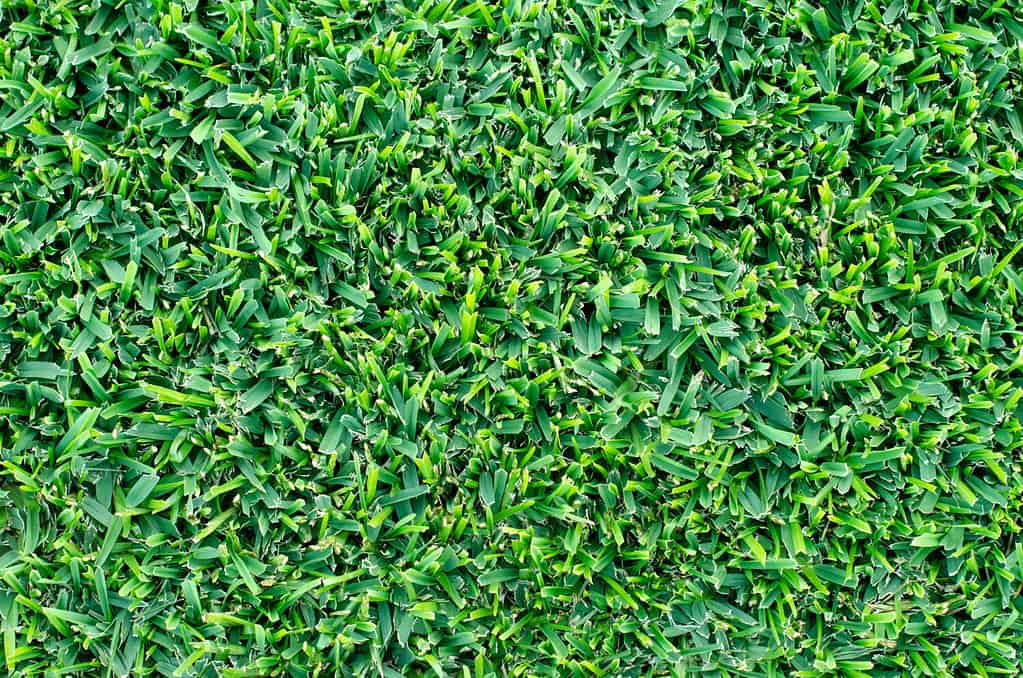
This type of grass typically grows between six and eight inches tall.
©doublelee/Shutterstock.com
Another warm-season grass that goes dormant in the winter is buffalo grass. Because it is native to North America, several landowners prefer it as their lawn grass. Buffalo grass is one of the few native options for a lawn that will appeal to people who appreciate cultivating native plants.
When grass is allowed to grow wild, it attracts species like butterflies and birds by blooming and going to seed. The choice to forgo mowing also results in less landscaping upkeep being required.
Buffalo grass seed is typically sown from April to September. Like other grasses on this list, buffalo grass will turn brown and become dormant outside of the Deep South.
4. Centipede Grass
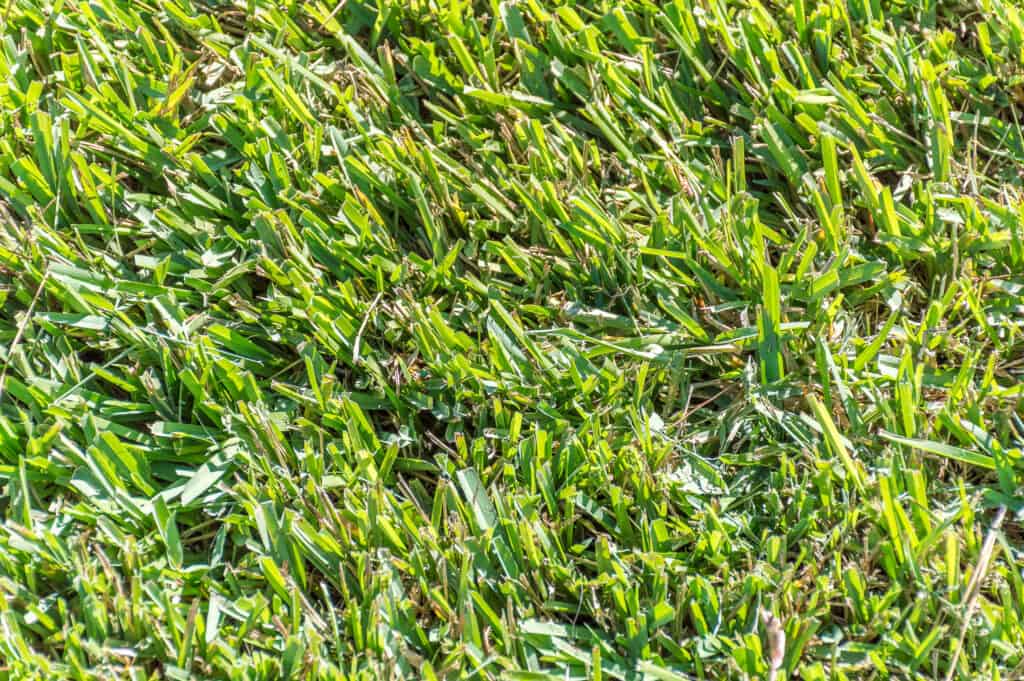
Avoid
centipede
grass if you’ll be walking on the grassy area a lot as it doesn’t hold up well to foot traffic.
©Craig Russell/Shutterstock.com
Centipede grass is well known for its exceptional resistance to heat and incredibly minimal upkeep needs. Centipede takes significantly less care and attention than other warm-season grasses, making it a choice among homeowners who want their lawn to look good with little maintenance.
Yet, centipede grass is only used in the Southeast of the United States due to its extremely specialized soil requirements and environment. The exceptional tolerance to heat of centipedes does not translate to drought resistance.
This is an additional reason why this type of grass thrives in the Southeast due to the area’s significant annual rainfall. In contrast to most warm-season grasses, centipedes have rather shallow root systems. This means that during periods of little rainfall, you need to exercise extra caution and monitor watering.
5. Ryegrass
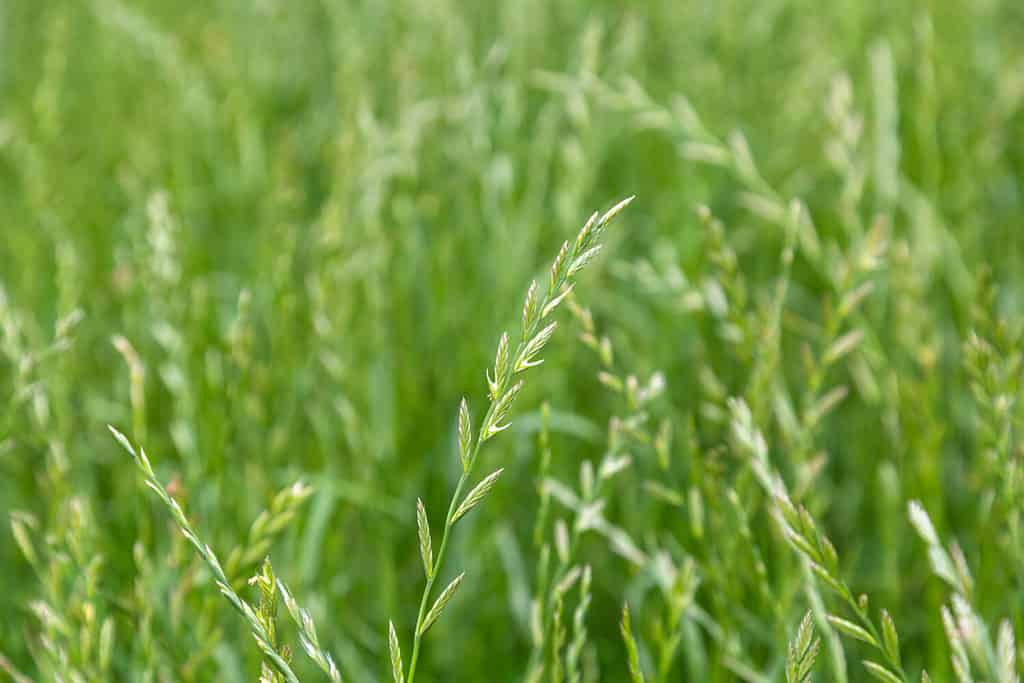
Some regions consider ryegrass a weed!
©S.O.E/Shutterstock.com
Another grass that will go dormant and turn brown is ryegrass. There are various varieties of ryegrass, such as winter, perennial, and annual. Every type of ryegrass has advantages of its own, such as usefulness, longevity, and appearance.
In colder northern areas, perennial ryegrass is mostly utilized as a permanent lawn grass; in warmer southern climates, it serves as a winter grass that goes dormant. The seeds for ryegrass are gritty and it grows in patches.
This warm-season grass resembles annual rye in appearance. It grows in clusters and can reach a height of one to two feet.
6. Switchgrass
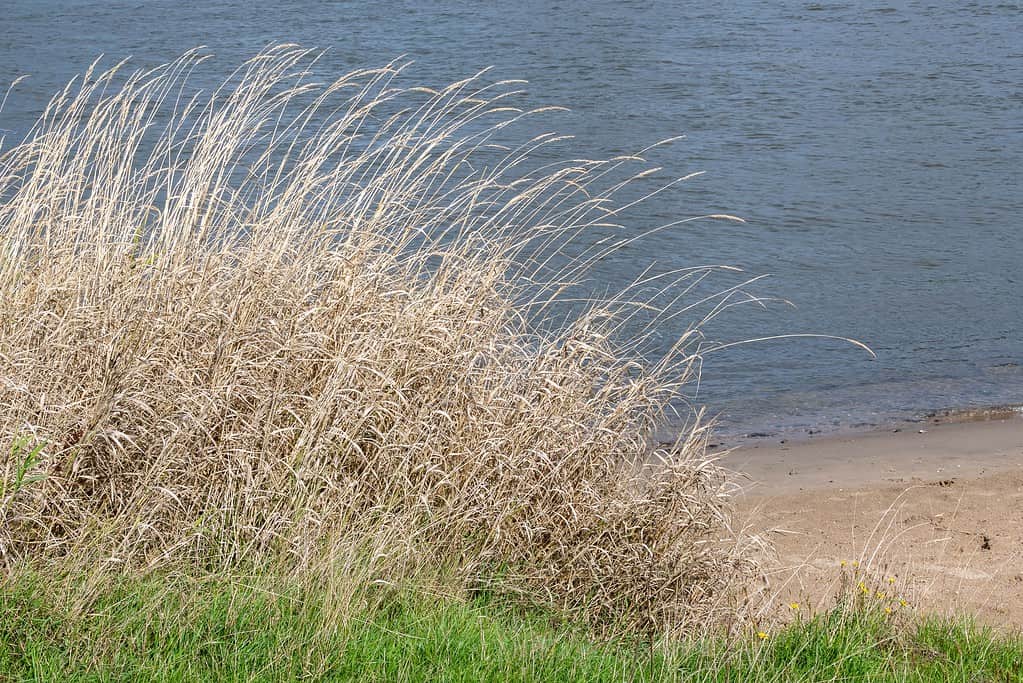
You’ll often see switchgrass on the shores of beaches in the south.
©Wirestock/iStock via Getty Images
Switchgrass, which gives the fall countryside a golden hue, is a significant prairie grass in addition to being a beautiful landscaping plant. In autumn, the sturdy, erect growth creates a beautiful cloud of fluffy seed heads.
It grows well in a range of environments and can withstand both sand and clay soils. In the winter, this grass turns brown and goes dormant. It often reaches up to six feet in height on clay and fertile soils.
The stiff stalks hold nicely in the winter and are excellent for sowing in pastures. For seeds to germinate and flourish, the soil needs to be a minimum of 55 degrees Fahrenheit or higher. Once temperatures are continuously this high or higher, the grass will be green and thriving!
7. Carpetgrass
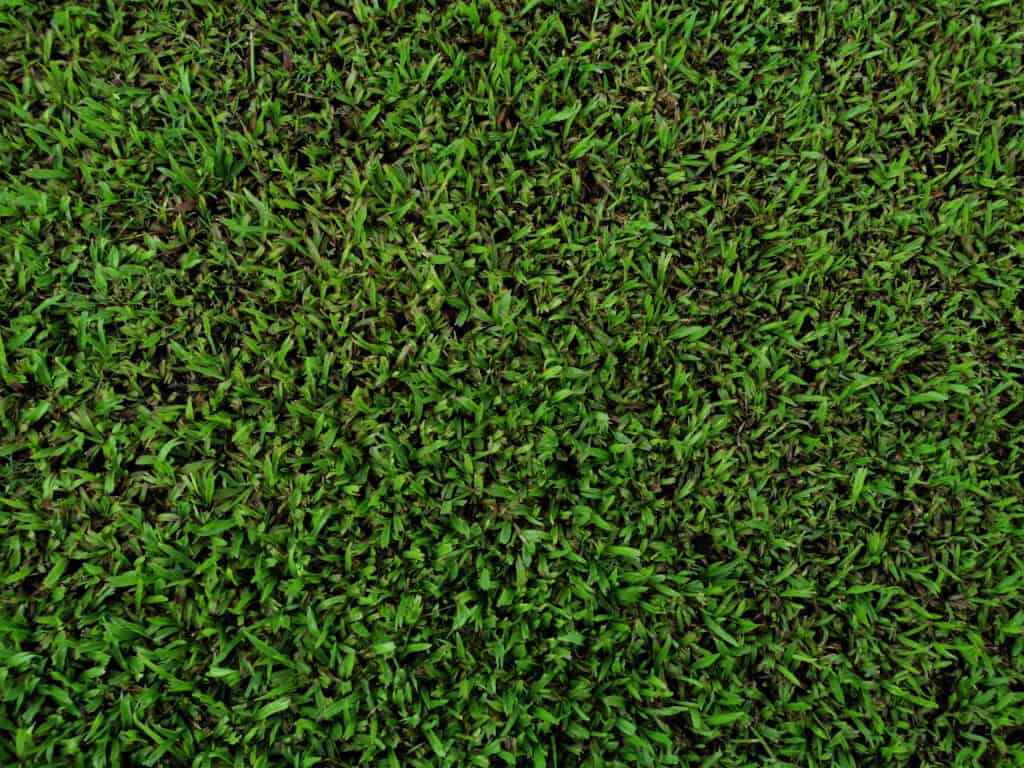
Green carpetgrass is a deeper shade than many other warm-season grasses.
©Leestudio/Shutterstock.com
Depending on whether it was intentionally planted or not, carpetgrass can be either a low-maintenance warm-season turfgrass or a grassy weed. It is most prevalent in regions such as Texas, Florida, Arkansas, and even Virginia!
Like all warm-season grasses, carpetgrass goes dormant and turns brown in the winter. Come springtime, it becomes active again and starts becoming a beautiful shade of green. The majority of homeowners with carpetgrass lawns do so because they have few other options.
All other types of grass may not thrive in their soil save this one. It grows well in sandy, low-fertility soils deficient in many vital plant nutrients. It’s acceptable to not fertilize it. For this reason, towns frequently utilize this kind of grass for parks, roadside plantings, and other places that require vegetation but won’t receive constant care.
8. Zoysia Grass
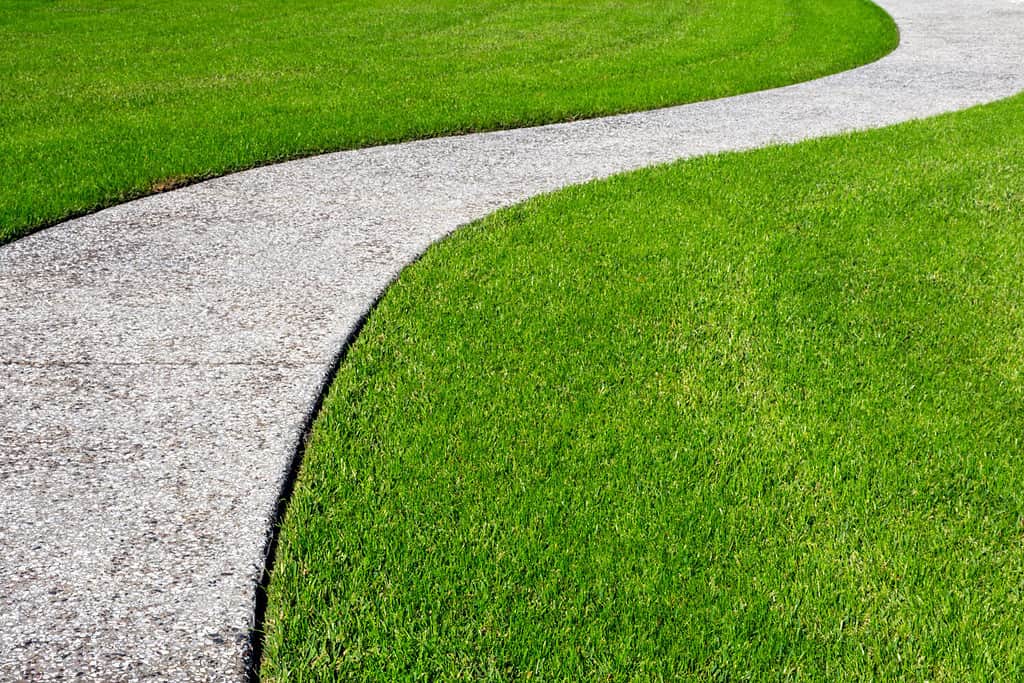
Zoysia grass is a bright, vivid green color, typically used in suburban lawns.
©Joanne Dale/Shutterstock.com
People in the area known by lawn care experts as the transition zone should give zoysia grass some consideration. This region symbolizes the point at which a number of prevalent lawn grasses from the north and south reach the boundaries of their environmental tolerances and the suggested grass changeover takes place.
Here, the increased heat and humidity might be problematic for many cool-season grasses. In a similar vein, certain warm-season grasses are also challenged by the bitterly cold winters in the northern parts of the zone.
Nonetheless, zoysia can thrive in this area due to its resistance to both heat and cold. It is well-recognized that zoysia grass can withstand a wide range of conditions, including heat, drought, high foot traffic, and more
Even in brief periods of drought, the grass stays green. Zoysia will fall dormant if the extreme temperatures and drought continue, but it will rapidly turn green again if it receives water. The slowdown and winter dormancy of zoysia grass occurs with the arrival of cool autumn temperatures.
Returning from Dormancy
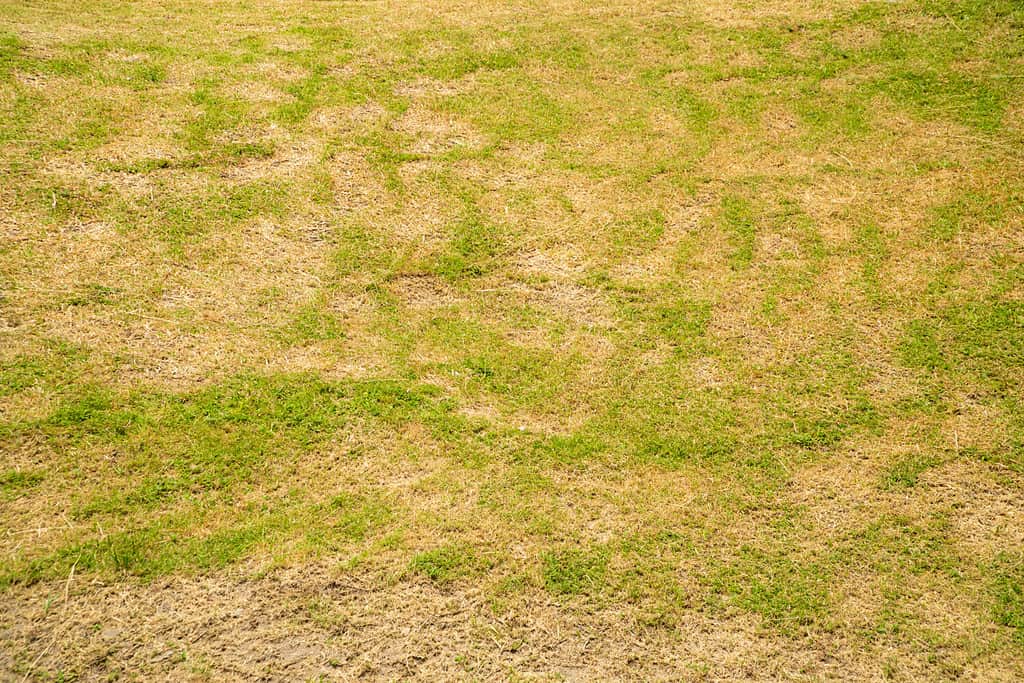
Cool-season grass goes dormant and turns brown in the summer.
©SingjaiStocker/Shutterstock.com
If your lawn is planted with warm-season grass, when the earth’s temperature regularly rises over 65 degrees, the dormant grass will start to thaw and become green again. Usually, this calls for air temperatures of no less than 70 degrees for a week.
Warm-season grass thrives from the start of spring until late October. Warm-season grasses often do not become dormant until approximately mid-November, however, this might vary based on the soil and air conditions.
All winter long, grass will remain dormant. It’s important to remember that the grass isn’t dead when it’s dormant. Think of it as going into hibernation until warm weather returns!
Summary of the Types of Grass That Go Dormant in the Winter
| 1. | Bahiagrass |
| 2. | Bermudagrass |
| 3. | Buffalograss |
| 4. | Centipede Grass |
| 5. | Perennial Ryegrass |
| 6. | Switchgrass |
| 7. | Carpetgrass |
| 8. | Zoysia Grass |
The photo featured at the top of this post is © muralird2008/Shutterstock.com
Thank you for reading! Have some feedback for us? Contact the AZ Animals editorial team.






